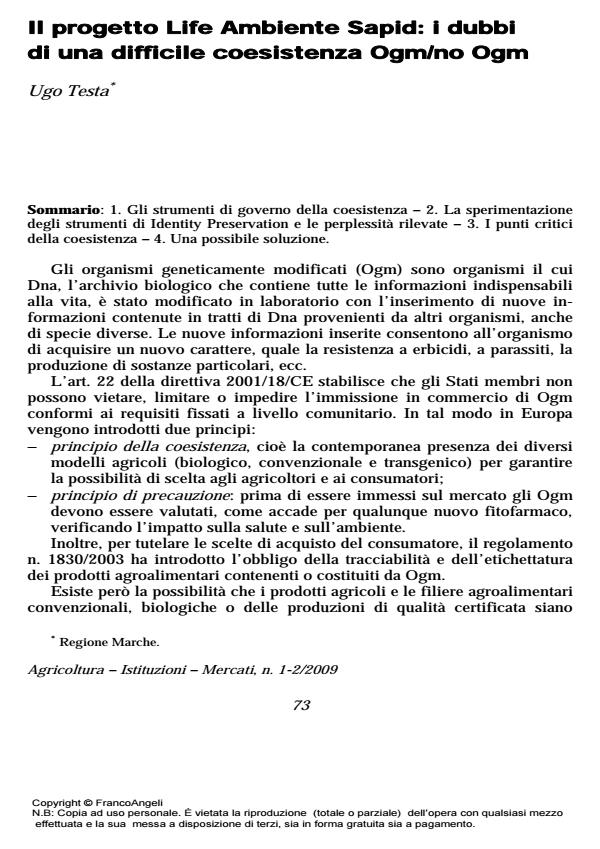The Life Environment European programme and the Sapid project: doubts about a difficult coexistence
Journal title AGRICOLTURA ISTITUZIONI MERCATI
Author/s Ugo Testa
Publishing Year 2010 Issue 2009/1,2 Language Italian
Pages 12 P. 73-84 File size 331 KB
DOI 10.3280/AIM2009-001007
DOI is like a bar code for intellectual property: to have more infomation
click here
Below, you can see the article first page
If you want to buy this article in PDF format, you can do it, following the instructions to buy download credits

FrancoAngeli is member of Publishers International Linking Association, Inc (PILA), a not-for-profit association which run the CrossRef service enabling links to and from online scholarly content.
Since it is related to living organisms, the Dna of Gmos may spread in space and time through pollen (as in the case of maize) and seeds (rapeseed), causing a "contamination" of non-Gmo plants and the related products. Product contamination may also occur in processing facilities, The coexistence policy, therefore, is difficult to implement in some contexts and it is at risk of compromising the identity of recognized quality productions (organic, PDO, PGI, typical). Therefore, coexistence strategies must be applied taking into account local peculiarities and different farming models in individual areas. The Sapid project was co-funded within of the Life Environment European programme. Its main aim is to identify strategies and instruments at local, supply chain and farm level to guarantee the coexistence of the different farming models, avoiding Gmo contaminations (including accidental one The results of the experimentation show that it is possible to bring the Gmo/non- Gmo contamination under the coexistence threshold (0,9%), but it is impossible to eliminate it, on the field or in the remainder of the supply chain, because of the peculiarity of the Marche agri-food sector. Through the Sapid project, we have come to the conclusion that, in a coexistence regime, a possible strategy to try and prevent Gmo contamination, including the accidental one, is the institution of Gmo-free districts, based on voluntary agreements among all the supply chain operators, for the moratorium on the cultivation, processing and use of Gmo plants and products.
Keywords: Gmo, coesistence, contamination, Gmo free district
Ugo Testa, Il progetto Life Ambiente Sapid: i dubbi di una difficile coesistenza Ogm/no Ogm in "AGRICOLTURA ISTITUZIONI MERCATI " 1,2/2009, pp 73-84, DOI: 10.3280/AIM2009-001007